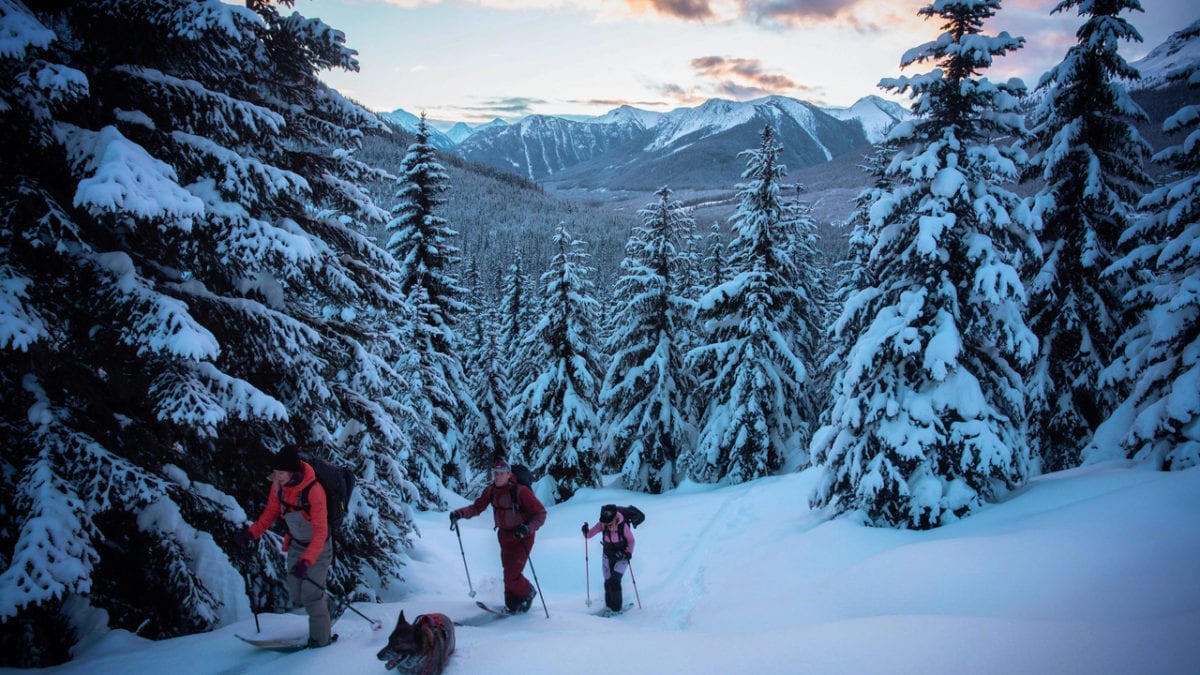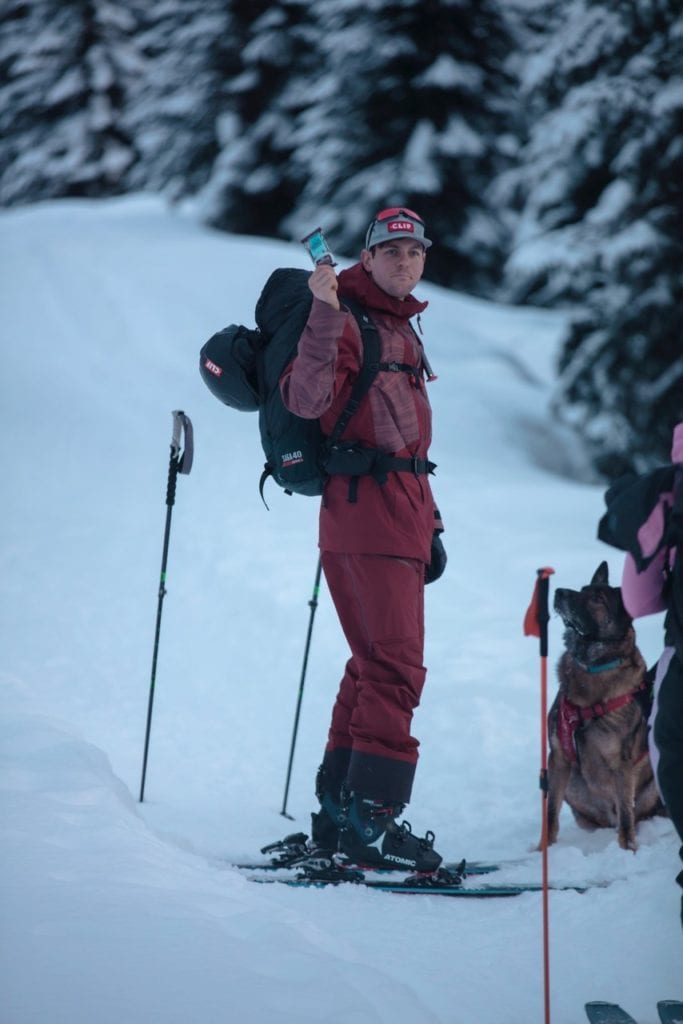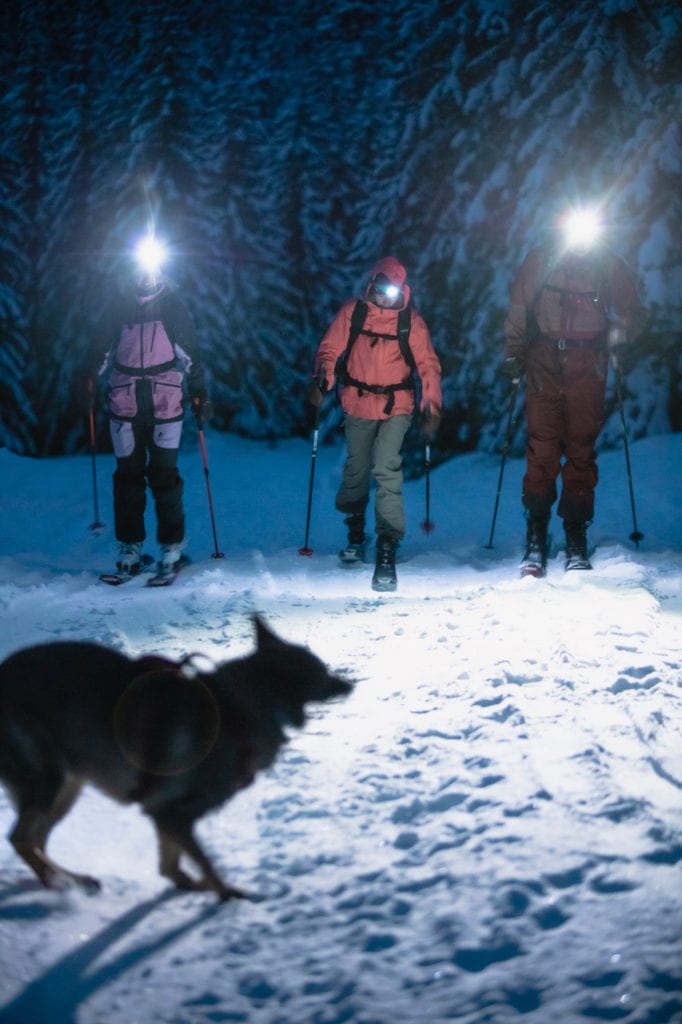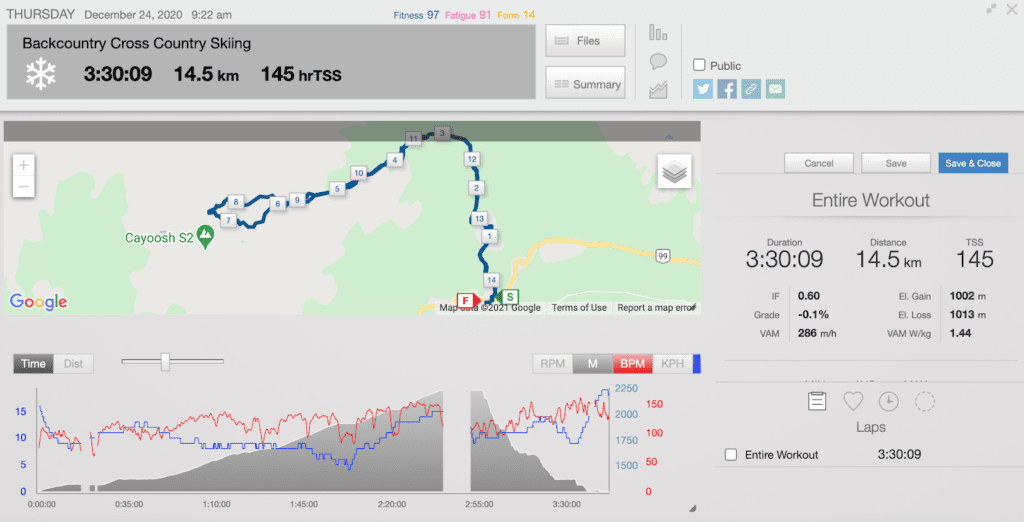A triathlon pro’s guide to backcountry skiing
Find out how you can incorporate backcountry skiing into your training routine
 Photo by:
Matthew Tongue @matthewtongue
Photo by:
Matthew Tongue @matthewtongue
This is my first winter in almost five years that I’m staying in Canada. After becoming a full-time athlete, winter was a thing I avoided whenever I could. Every year, around November, I would migrate to warm weather locations like Arizona, Barbados, Portugal and Maui for large chunks of time to help make training a little easier. Trust me, it was never lost on me how lucky I was to have these opportunities. When you’re in the process of building a base, getting to do it in warm weather makes life a touch more enjoyable. However, with COVID-19, I’m the camp of athletes that made the choice to stay put, limit my risk of exposure and, to be frank, follow the rules. I personally could not justify wanting to be in warm weather to train as an essential reason to travel. So, here I am in Whistler, B.C. figuring out how I get my work done so when racing returns I’m ready!
In the Sea to Sky corridor I have the option to do both amazing skiing and biking year round. I just need to make a 30-minute drive down the mountain to Squamish for amazing biking, part of the reason I moved here in 2018. That said, I grew up skiing. My parents started me when I could walk and they gave me the opportunity to ski in amazing places and improve my skills. As a teenager I wanted to be a pro slopestyle skier – obviously that didn’t work out. in my later teens I got more hooked on summer sports, and triathlon took over.
In 2017, on a winter trip with my parents to visit my sister, who also lives in Whistler, we stopped at Joffre Lakes, a very popular summer hiking destination. The parking lot was filled with people about to go ski touring – the area has a lifetime of routes to skin up and ski down. I was intoxicated with the idea of what they were doing and wishing that was me.
Related: Cross training in the deep freeze
Fast forward to the end of 2019. I was coming off another very successful year of racing and my coaching company, Mad Endurance, was booming. I finally wasn’t a struggling athlete and had disposable income. I made the decision to start getting backcountry ski gear and to get into the sport.
View this post on Instagram
I’ve kept on ski touring and posting about it and have had lots of triathletes message me asking what’s involved and how they can use it within their training. First off, unless you plan to up track within your resort where it’s safe and controlled, there is a lot more to backcountry skiing then just getting skis and slapping some skins on.
Related: Athletes making a difference – Karsten Madsen tackles “Everest”
First, I want to talk about the investment in safety before I even start on the benefits to your triathlon training. You first need to go to an avalanche safety course. Many companies offer weekend courses for anywhere from $500 to $1000. I also believe you need to do your own continued learning around snowpack and what causes an avalanche as if your life depends on it. Going into the backcountry has so many dangers and unknowns. Even experienced people die every year from avalanches, falling in tree wells, getting lost, amongst other mishaps.
So why would you even take on this risk? High performance sport has taught me to leave no stone unturned. I prepare for every trip. I also plan most of my tours to be five to six hours, but I pack like I’ll spend a winter night in the mountains.

What I take with me ski touring
- Skis
- Touring Boots
- Poles
- Goggles
- Helmet
- Climbing skins
- Avalanche airbag Pack
- Avalanche transceiver
- Snow shovel
- Probe
- Slope meter and snowpit analysis kit
- Suunto 9 watch (navigation and heart rate)
- Maps / route guide
- Sunscreen
- Lip balm
- Sunglasses
- Headlamp
- First-aid kit
- Fire – Lighter
- Knife / Multi-tool
- Reflective blanket
- Clif bars/ Extra days supply of food
- Water bottles + water filter
Insulation/ Clothing
- Insulating down jacket
- Waterproof/breathable jacket
- Waterproof/breathable bibs pants
- Insulating hat, cap
- Buff (neck or face gaiter)
- Sun-shielding cap for bright days
- Gloves, mittens + extra
- Light gloves (for high-energy activity)
- Wool Socks
As you can see, it’s a rather long list. I believe this preparation and thoughtful consideration on routes and selecting where to ski and where not to ski have allowed me and my touring partners to make it back home safe and sound. Yes you NEVER tour alone and you rely on these people to save you if you run into problems. In the group and company you keep, you’re only as strong as your weakest link and this fact is what makes ski touring rather exclusive. I don’t just take anyone with me, or go with a random group. You think through the knowledge and experience everyone has.

Training benefits
In the time I’ve been ski touring I’ve been blown away with how it has improved my biking and running. You saw how long that list was – all that gear is on my body or in my pack. My Air bag backpack, filled with gear and water, weighs 30 to 40 lbs.
The movement of ski touring is very low impact and very strength based, utilizing the same muscle groups as cycling. From November to February, all my training is based on developing functional strength. Also, I dislike riding my bike on a trainer, so I do it as little as I can.
So my goal was to see if ski touring could replace my long, simple endurance ride of the week – a ride that would normally range from three to five hours long at 130 to 140 bpm and between 200 and 250 watts. The first few ski tours I did showed that my heart rate remained in zones 1 and 2, with the addition of adding some functional strength. This does not mean you should go ski tour everyday to be set for your upcoming races. You still need to get targeted tempo- and threshold-quality work on the trainer. With a well thought out plan and good recovery, I’ve started to have a lot of success in my 2021 bike power numbers.
So I know ski touring might not be realistic for many reading this, but I felt we have all read the same winter cross-training article before and thought I would provide a fresh perspective. It’s also a fast-growing activity. Having some facts before you get started is always helpful.
I’m by no means knocking other methods. Grab your heart rate strap and watch and go for a cross country ski, or snowshoe, or fat bike ride to replace that Saturday long effort. If you’re somewhere without snow, challenge yourself with gravel riding or mountain biking.
In these tumultuous times, it is important to get out the door for all aspects of your physical and mental health. Avoiding winter burn out helps me to roll into spring excited to hammer out some large bike miles, with a fit strong body ready to absorb it.
Karsten Madsen is a professional cross triathlete who has won five major Xterra titles and three national championships. He is also a coach. Find out more about him at karstenmad.com

